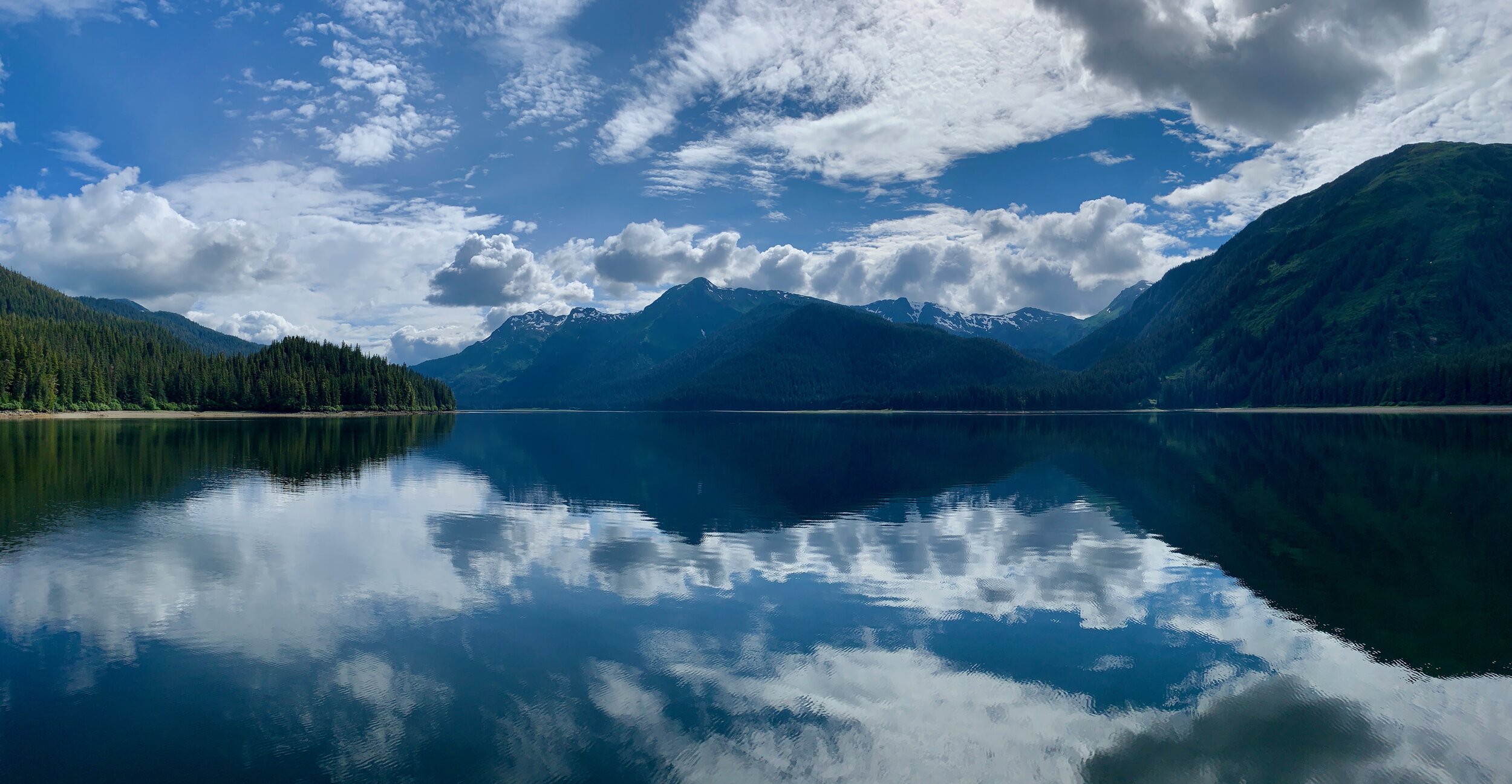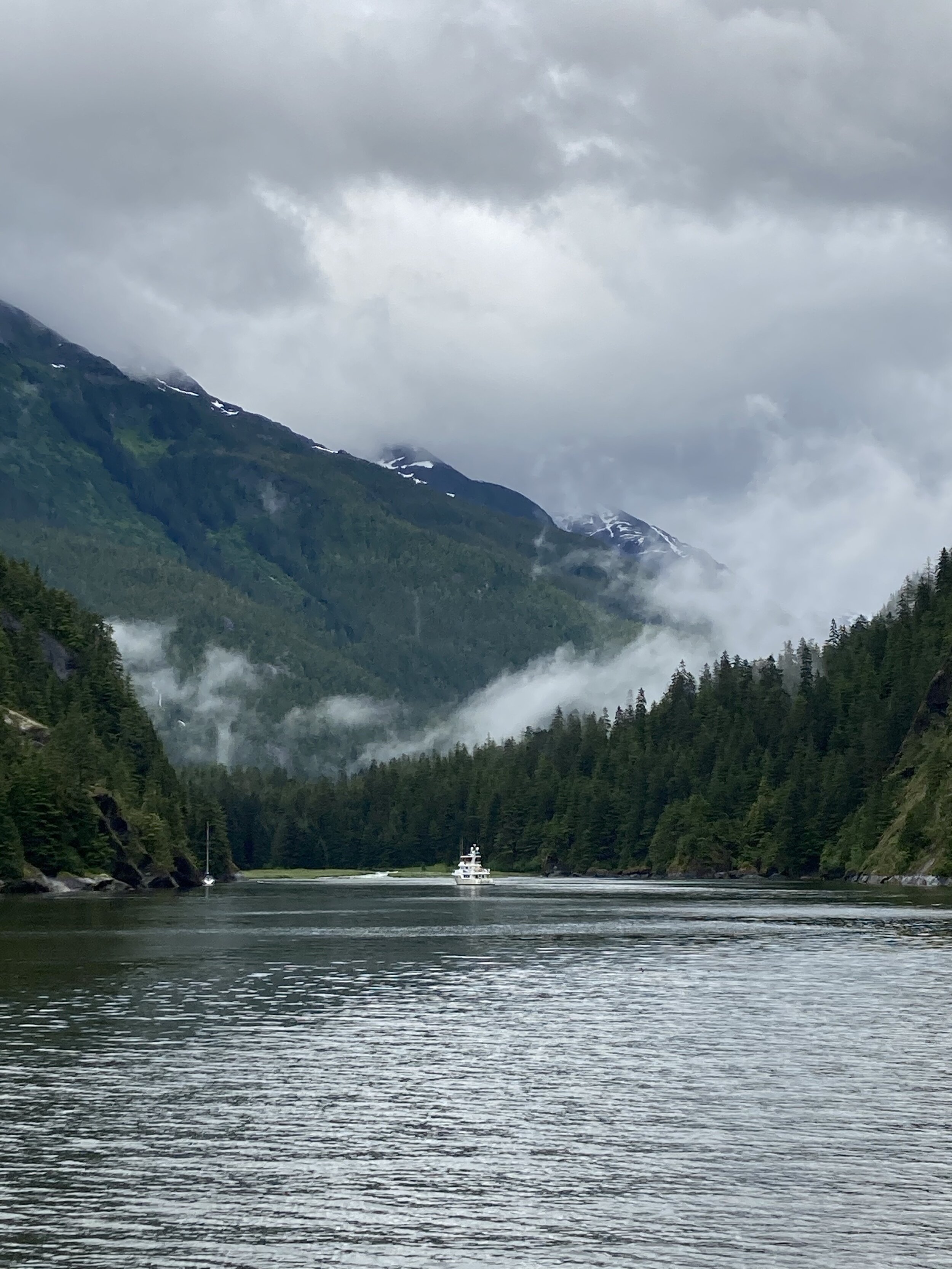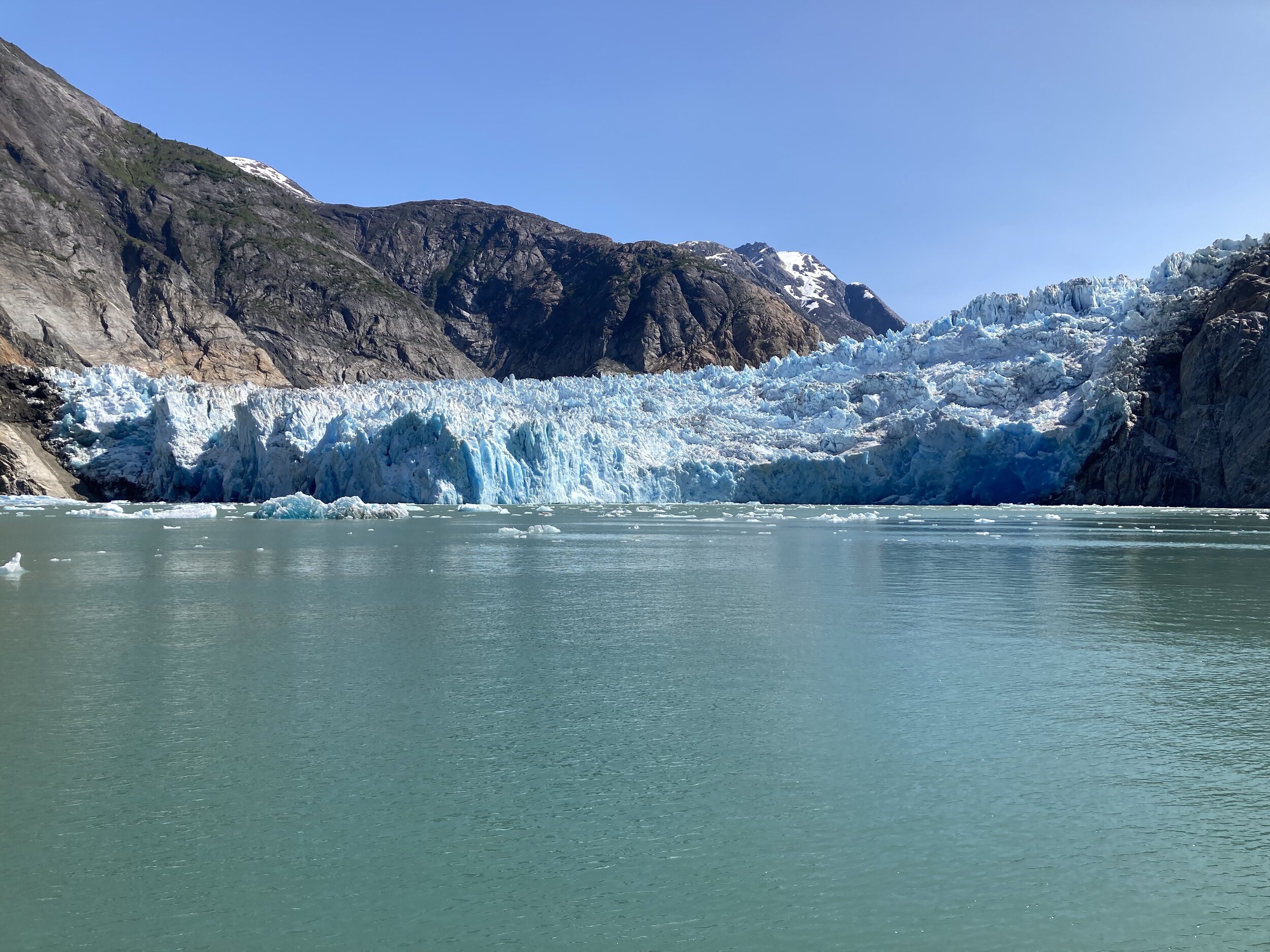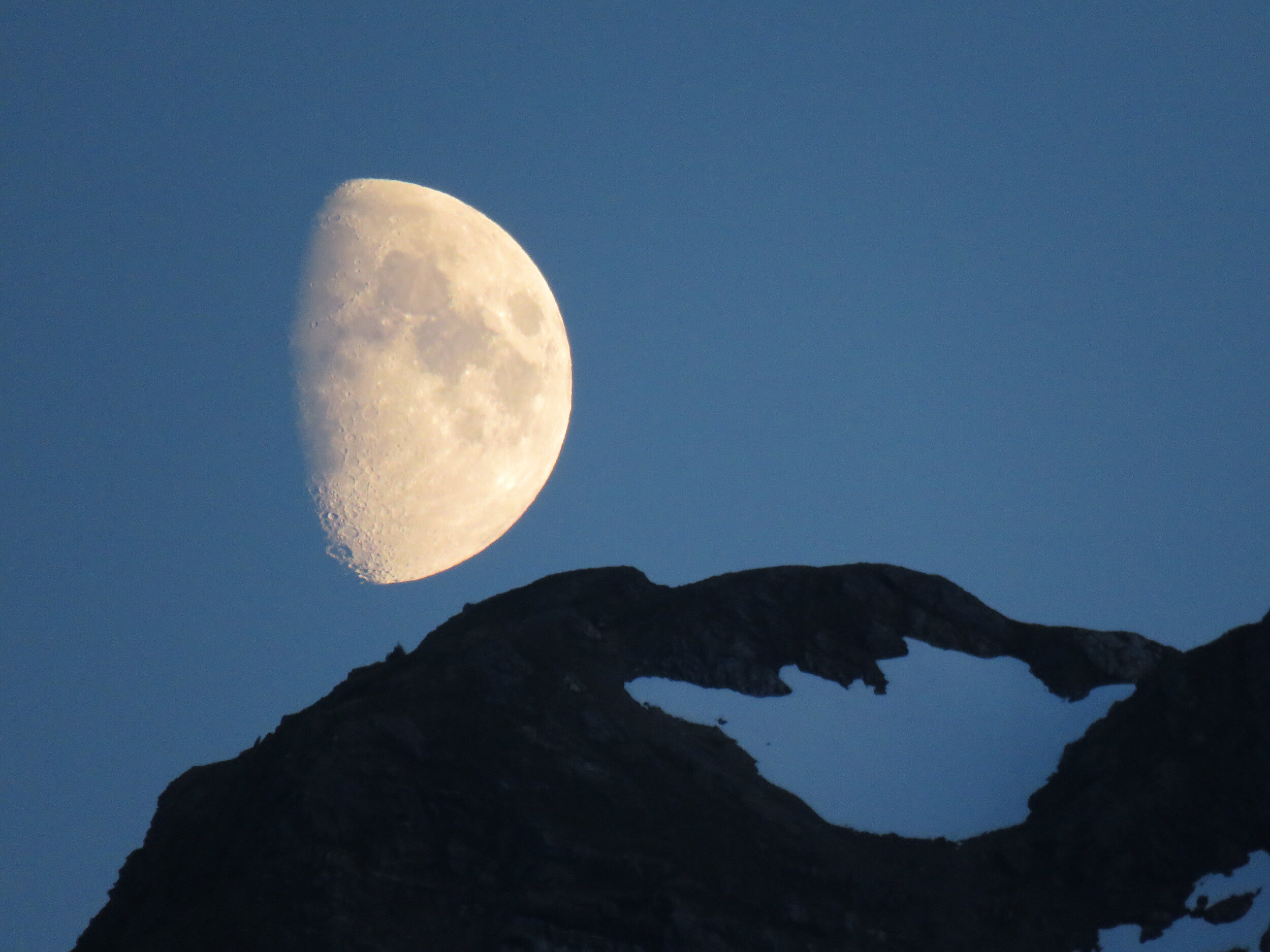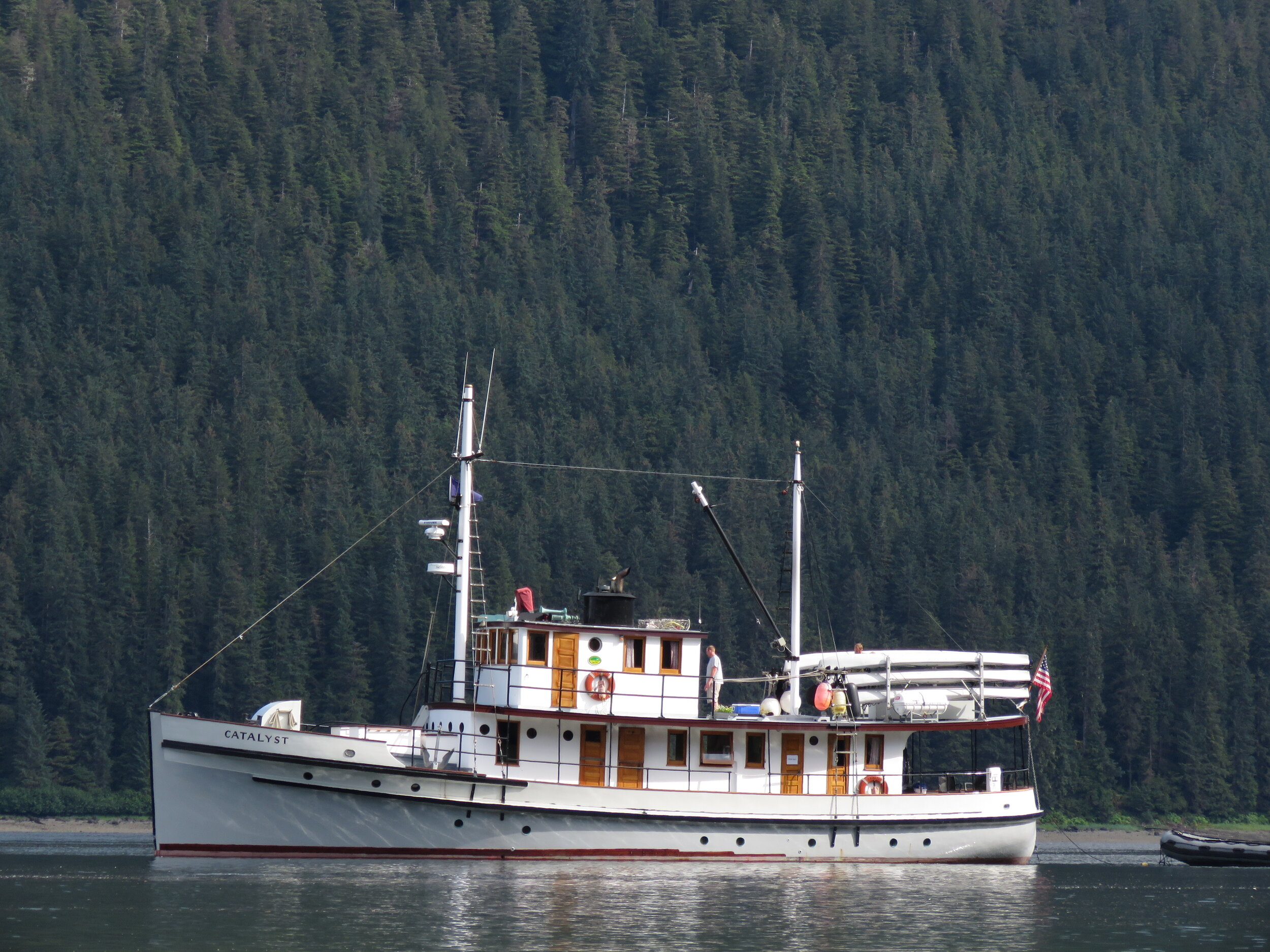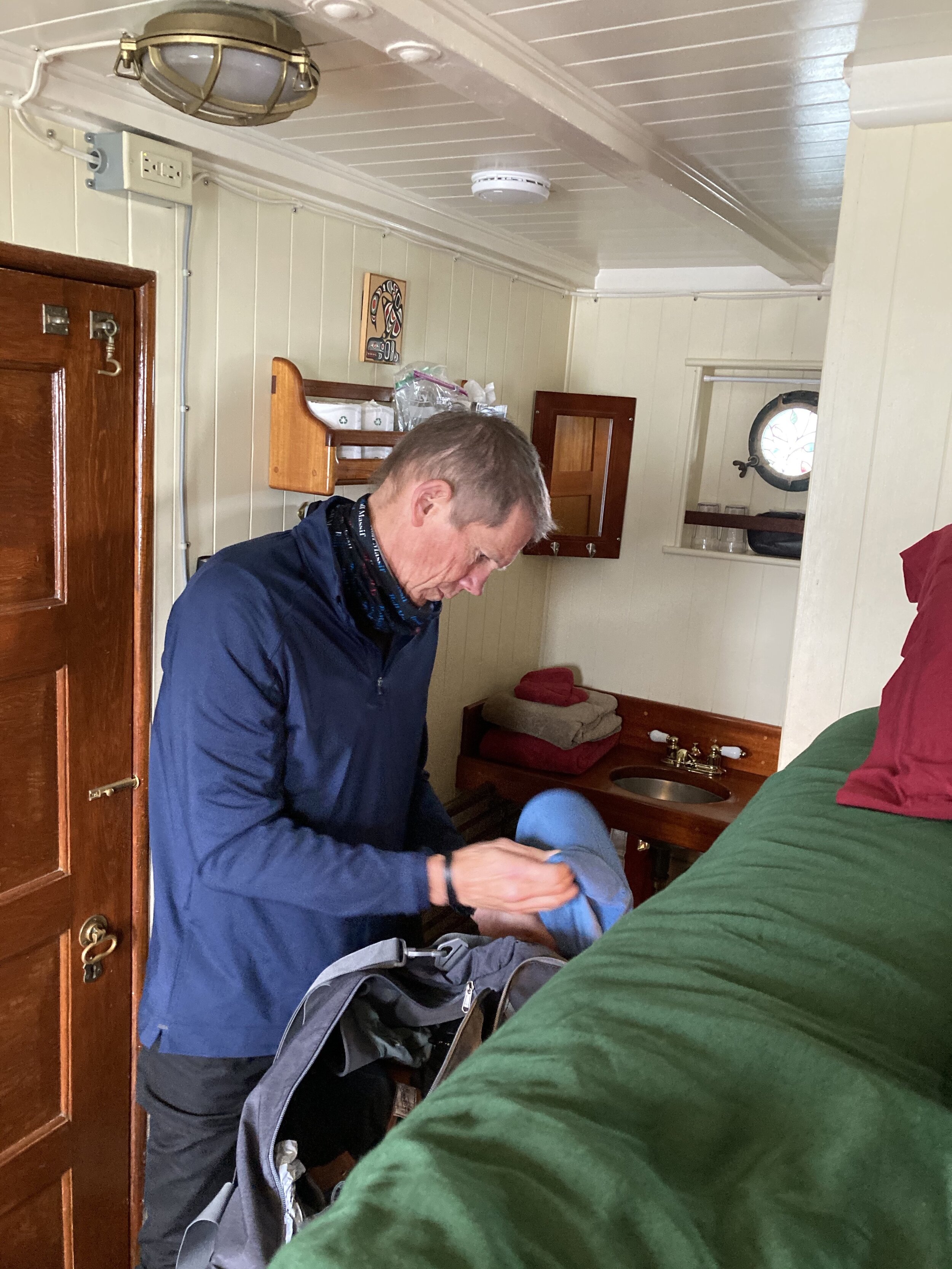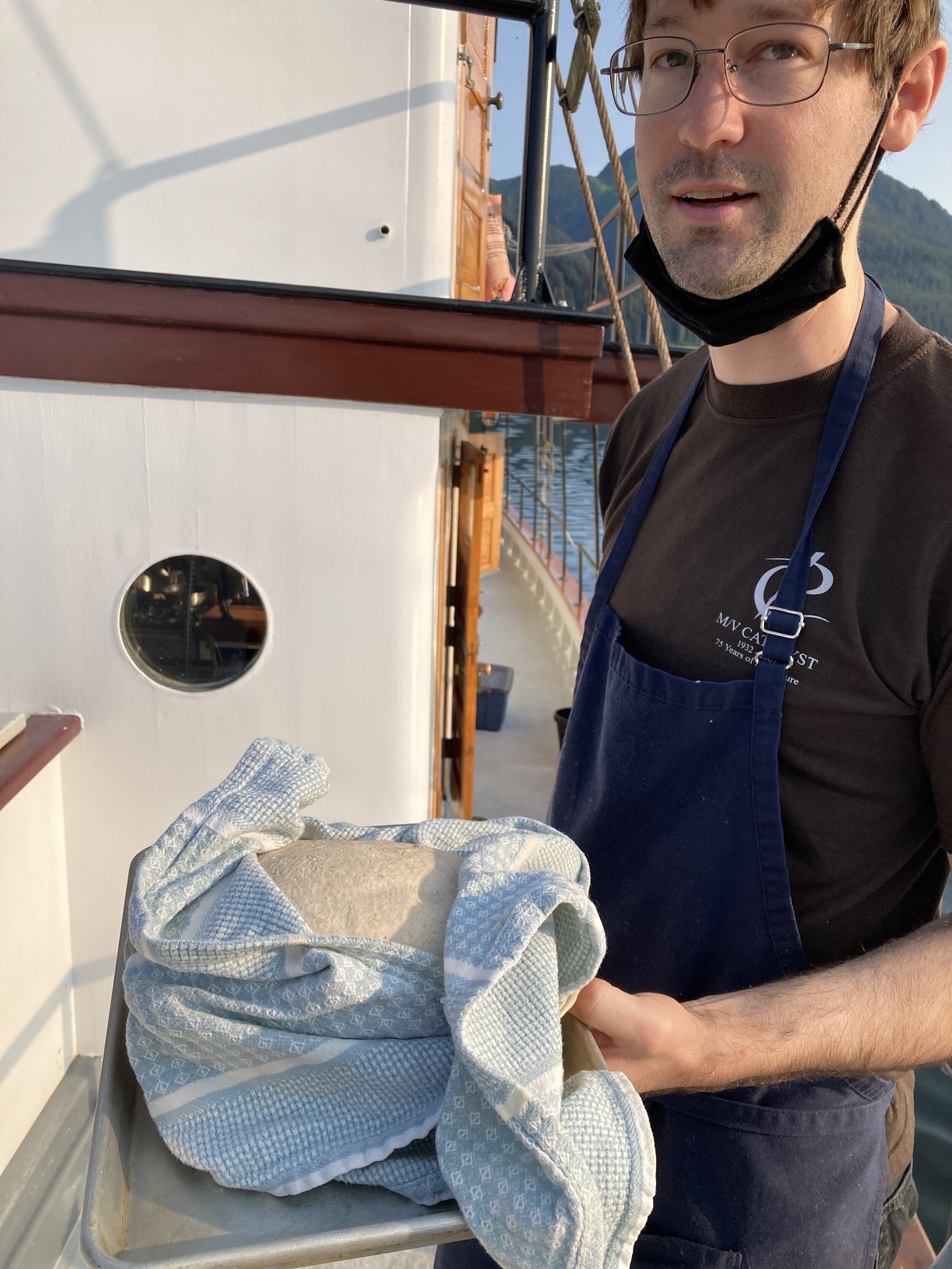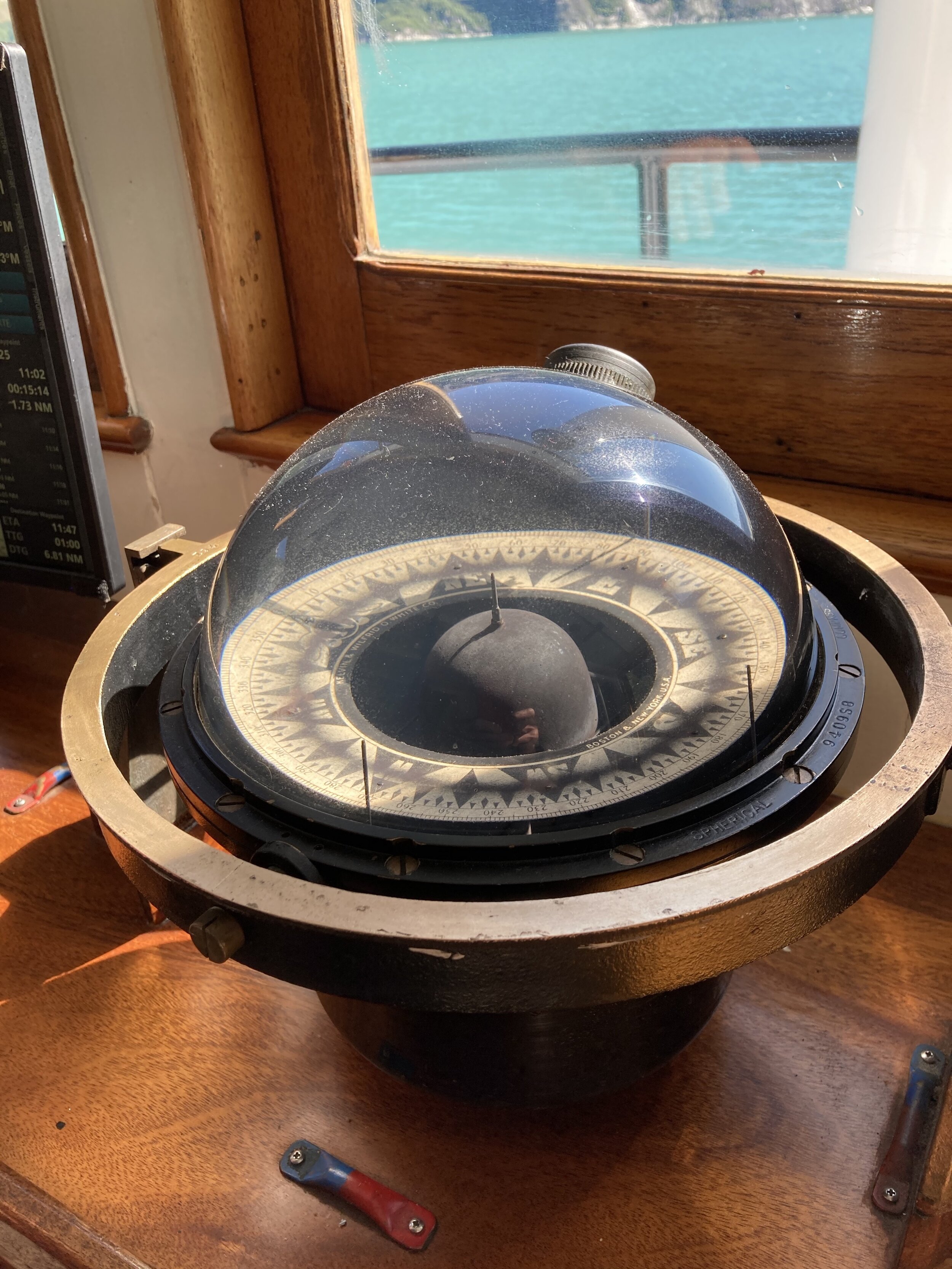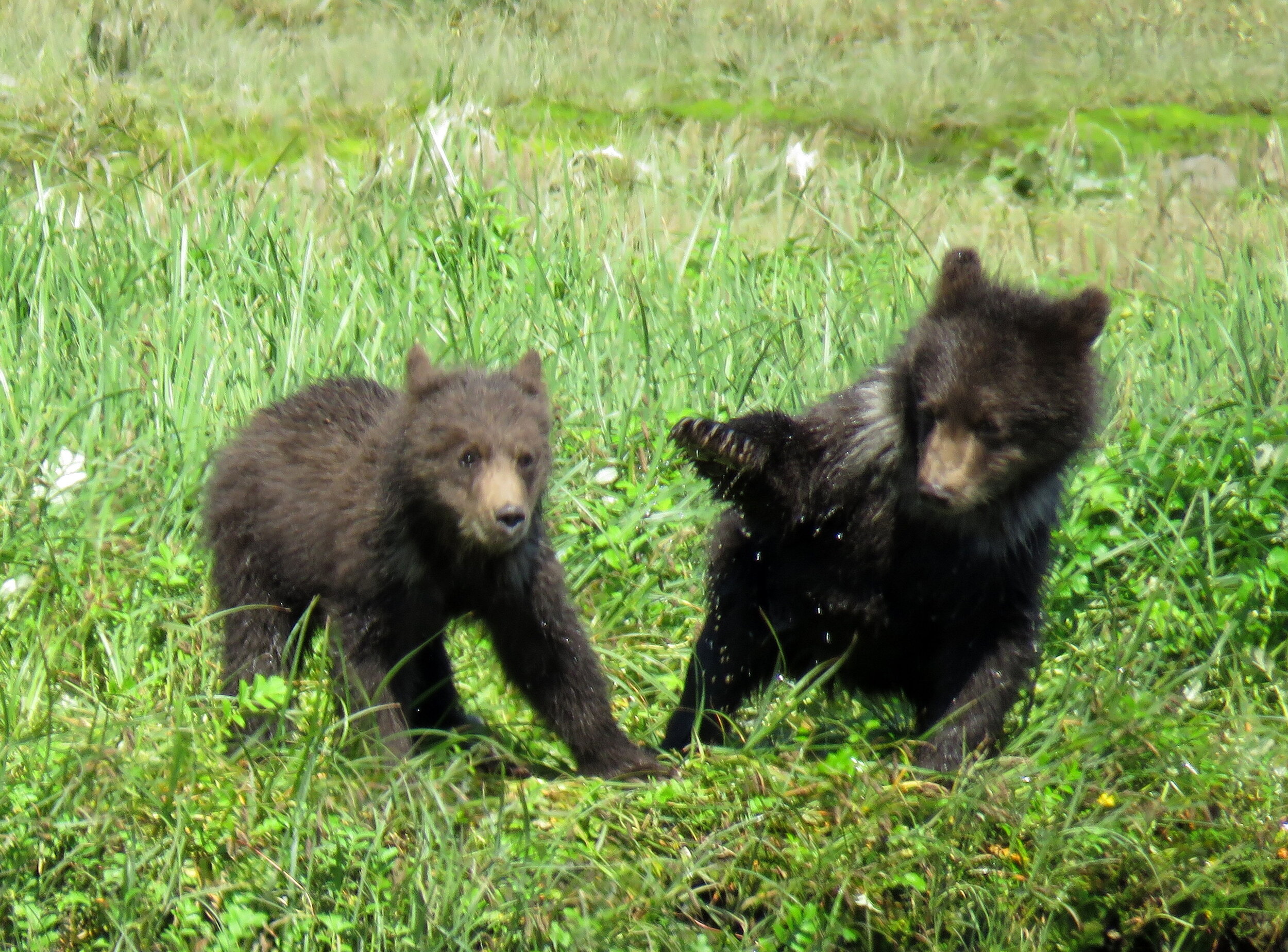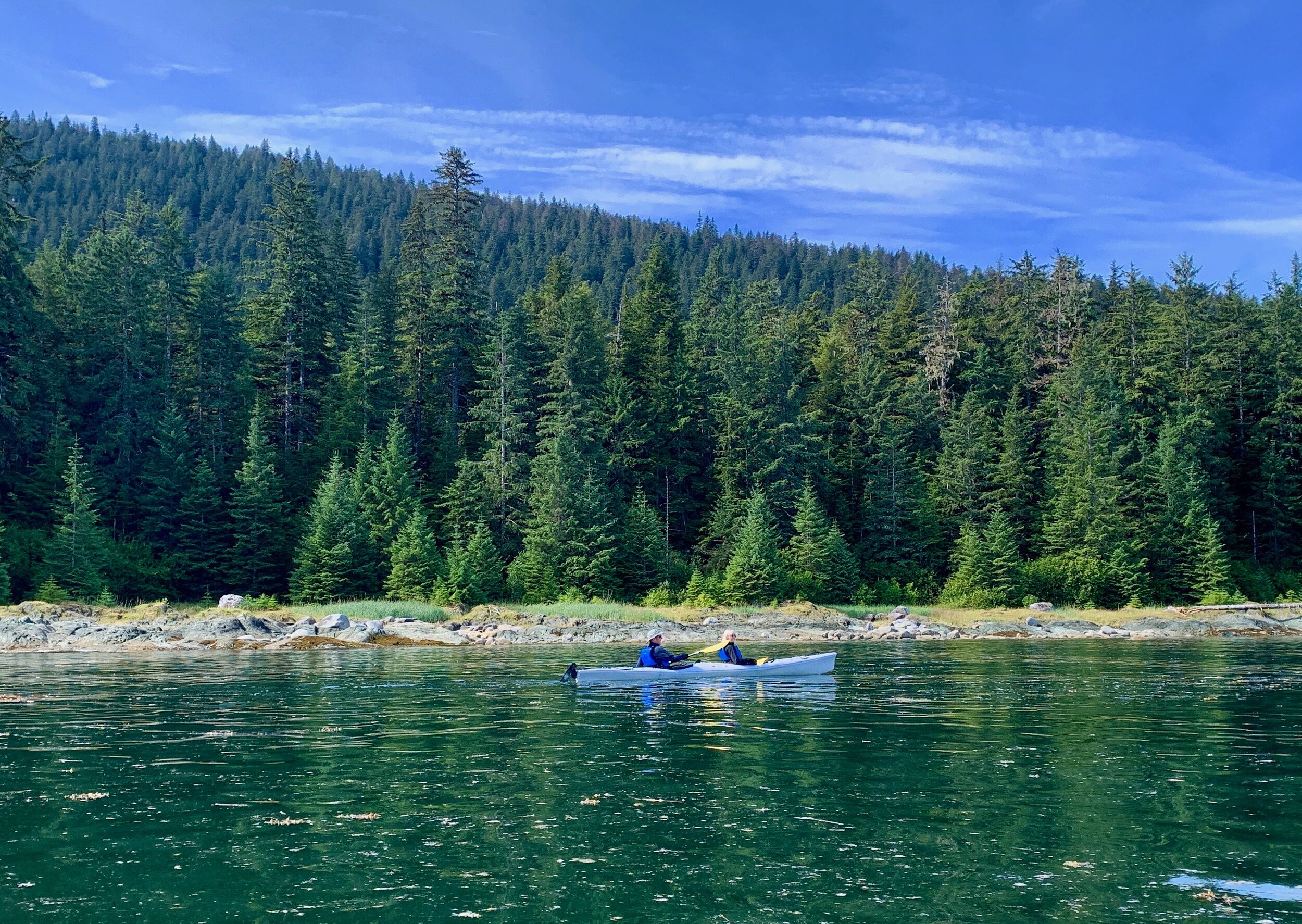The Inside Passage.
The email popped up in my account the middle of June: “Alaska is open!” Into month four of stay-at-home and then safer-at-home orders with no end in sight for the COVID-19 pandemic and consequent world-wide economic, financial, and social upheaval, the news caught our attention. Alaska had strict entry requirements, including negative COVID-19 test results within a specified time of entry and/or additional testing at airports (with limited interaction or quarantine, depending on one’s testing status, until second negative test results were obtained). Small boats (up to 12 passengers) were permitted to travel the Inside Passage, while cruise ships (which accounted for almost 1.5 million tourists a year in Alaska) were totally prohibited from entering Alaskan waters. The brochure touted a return to Alaska of fifty years ago, an unprecedented, once-in-a-lifetime opportunity.
In May, we’d decided to try to sell our house in Boulder and move to a milder climate, at the same time wanting to be closer to our sons and grandchildren: Asheville, North Carolina became the destination of choice after considering so many other places, both where we’ve lived in the past and where we might want to live. An Alaskan trip at the end of July could slip into the middle of these plans. Why not make our life more complicated for a chance to explore the mild waters, glaciers, steep mountains, and wild animals of south east Alaska? My concern about tight quarters and tendency for motion sickness were quickly dispelled; a trip that wasn’t on our radar became a salvation.
As the departure date for our seven-day trip neared, the news was disappointing: COVID-19 test results were beginning to take three to ten or more days, which would be too long to meet the prerequisites for entering Alaska. This didn’t bode well for us. We did not want to be quarantined in the tiny town of Petersburg, the departure harbor for our trip, with only two flights a day, limited hotel availability, even more limited eating choices, if we didn’t have the results. To add insult to injury, our travel insurance didn’t cover trip cancellations due to government restrictions, like Alaska’s entry requirements or delayed test results. We decided if we didn’t know that we were negative by Friday evening before our early Saturday morning flight, we wouldn’t go. But to our amazement, we had a message in our healthcare portal the day after the test: we were both negative! The trip was on. While we were already packed, we could now truly enjoy the anticipation—if only for two days—of the journey.
We’d been to Alaska years before with our younger son, primarily the areas around Anchorage, Denali, and Prince William Sound. Despite that trip, I was not prepared for the wild beauty of southeast Alaska and the Inside Passage. The color blue, in all its permutations, best describes the image of this land in my mind: grayish-blue early morning waters;
Misty day.
glacier-fed milky-blue streams;
South Dawson Glacier at end of Tracy inlet
Mid-summer Alaskan night sky
sun-drenched reflections of white clouds, blue sky, and deep blue waters in the afternoons; deepening blues of the midnight sky, never quite dark, seen through the portholes of our cabin; the crystalline blue of thousands of years old compacted snow embedded in glaciers tucked into steep mountains at the end of narrow inlets.
Our boat had been built in 1932 for the University of Washington as its first science-research vessel. She’d had several lives before being out-fitted for tourist travel, still maintaining her original engine (requiring oil on the pistons every three hours), steady but sometimes persnickety. The cabins were small, with two feet by three feet combined toilet and shower stalls, overhead bunks, food and wine storage under the beds, tiny portholes for viewing and light.
Doug in our cabin.
Chef Michael with sourdough bread.
The food was exquisite, the chef trained in Michelin-starred restaurants, making sourdough bread from a starter from the 1850s to spun sugar desserts to Asian-inspired fish dishes.
Our naturalist guide was humble and brilliant, trained in ecology but mentored and experienced on the flora and fauna of southeast Alaska. The captain and the engineer were clearly mariners, thoughtful, knowledgeable, funny, always making us feel safe (even the last night when an unexpected micro-storm and winds of 50-60 mph slammed us broadside).
Almost one hundred year old ship’s compass
During the weeks before the voyage, we scoured the weather outlook, each day showing rain or showers or wind, typical Alaska weather (a friend commented that one doesn’t go there for the weather, still, being on a small boat in the rain wasn’t very enticing). And then, after huge rain storms the night before we were to sail, we had one day of low clouds and mist, followed by five days of glorious sunshine, almost unheard of for Alaskan summers, bookended by wispy clouds covering the mountains behind Juneau upon our arrival.
Brown bear cubs at Pack Creek, protected bear habitat.
My impressions of the Inside Passage are magical: the blues described above; the lush rain forests with colorful moss and lichen; mother brown bears (also called grizzlies) in the streams trying to catch salmon starting to swim upstream to spawn, followed by their cubs, awkward, cute, tentative; soaring bald eagles too numerous to count; kayaking within thirty feet of humpback whales; orcas or killer whales off the boat’s bow; Dall porpoises racing one another beneath the boat;
Kayaking for beginners!
floating ice bergs (or bergy-bits as smaller pieces are called) downstream from the immense glaciers; endless nights without pure darkness; the steady rhythm of life at sea, with all decisions based on the ebb and flow of the day’s tide; peace and serenity, no social media to distract us from our immersion in a time before this time.
Humpback whale, diving.
I did miss land, being able to run, hike, walk; at one point, 48 hours passed without touching land, instead moving by boat or kayaks. I wouldn’t make a good sailor, but I absolutely appreciate how that life could wind its way inside one’s soul. We were so fortunate in this trip, the timing in the midst of a pandemic and staying in a tiny AirBnB, our waiting spot between two homes; the gracious crew; the compatible guests; the incomparable beauty of the Inside Passage with its glaciers, granite mountains hugging the shore lines, bountiful wildlife, and sea.
Bald eagle, waiting.
